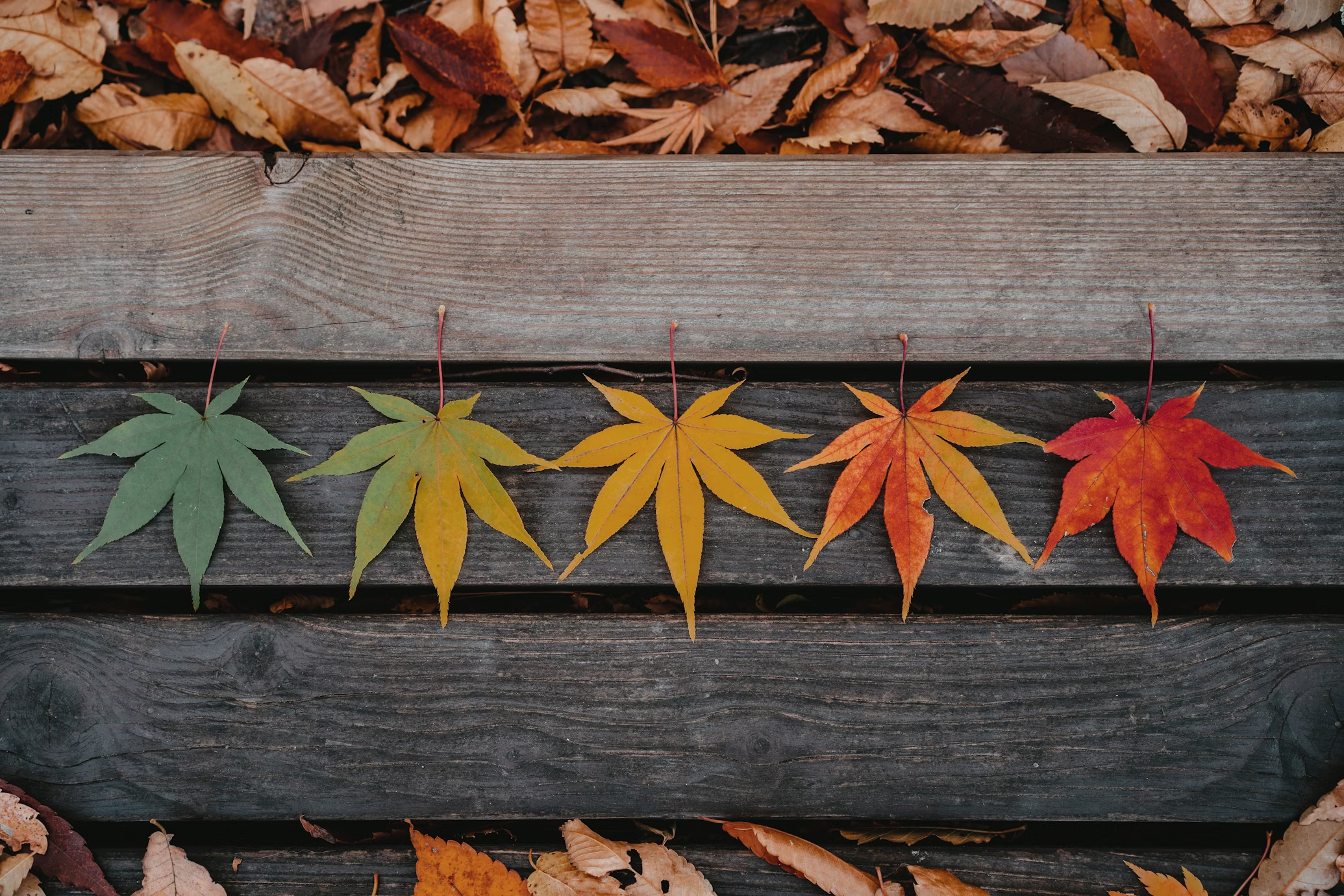As the Earth orbits the sun and the seasons shift from the budding of spring to the quiet of winter, isn’t it magical to think that our inner landscapes can reflect these vast, external changes? Each season carries its unique energy and lessons that can profoundly influence our emotions, energy levels, and overall well-being. But how often do we pause to align our meditation practice with these natural cycles?
If you’ve ever felt a natural inclination to wake early and explore during spring or to turn inward and reflect during the chilly days of winter, you’re already attuned to the rhythms of nature. Imagine deepening that connection through your meditation practice, allowing each season to infuse your sessions with its character and wisdom.
This article invites you to explore tailored meditation practices that harmonize with every season. From the rejuvenating breaths of spring to the contemplative silence of winter, we’ll journey through various techniques that not only enhance your meditation experience but also deepen your connection to the natural world.
Ready to attune your meditation practice to the rhythm of the seasons? Let’s embrace the changes together and find harmony in the cyclical dance of the Earth.

Spring: Awakening and Renewal
Spring is a time of awakening. As the chill of winter melts away, the world bursts into color and life. Days grow longer, trees bud with new leaves, and flowers start to bloom, signaling a fresh start. This vibrant transition isn’t just a feast for the eyes; it deeply influences our mood and energy. Scientific studies show that the increase in sunlight during spring can boost our serotonin levels, making us feel happier and more energetic.
This season of renewal offers a perfect backdrop to refresh your meditation practice. Embracing the themes of growth and rejuvenation in your sessions can mirror nature’s revival, enhancing your sense of well-being and connection to the world around you. Let’s explore two specific practices that align beautifully with the spirit of spring.
Visualization Meditation Focusing on Growth and Renewal
Visualization is a powerful tool in meditation, especially when we focus on themes of growth and renewal. Here’s how you can practice:
- Find a comfortable spot: Choose a quiet place where you won’t be disturbed.
- Settle in: Close your eyes and take a few deep breaths to relax your body and mind.
- Visualize growth: Imagine a seed buried in the earth, slowly beginning to sprout. Picture it growing, pushing through the soil into the sunlight, gradually blooming into a beautiful flower or tree.
- Link to yourself: Reflect on aspects of your life that you’d like to renew or grow. Imagine yourself blossoming in a similar way, developing new skills, healing old wounds, or expanding your understanding and compassion.
Practicing this meditation regularly can help embed the qualities of growth and renewal in your mindset, making it easier to embrace change and new opportunities in your life.
Walking Meditation in Nature to Observe the Rebirth Around
Walking meditation combines movement with mindfulness, and doing it in nature during spring amplifies its benefits. Here’s a simple guide to get you started:
- Choose a natural setting: A park, garden, or trail where you can be surrounded by signs of spring.
- Start with awareness: Begin your walk by noticing the rhythm of your breath and the feel of your feet touching the ground.
- Engage your senses: As you walk, pay attention to the budding plants, the sounds of birds, and the fragrance of flowers. Notice the colors and patterns of the season.
- Reflect on renewal: With each step, consider how the earth renews itself and how you too are part of this beautiful cycle of life and renewal.
Walking meditation not only helps with grounding and centering but also invigorates the body and mind with the fresh energy of spring. It’s a wonderful way to step into a new season of life, literally and metaphorically.
By incorporating these meditation practices into your spring, you allow yourself to connect with the season’s essence of renewal and growth. This alignment can bring a profound sense of harmony and readiness to embrace the unfolding year.

Summer: Abundance and Activity
Summer brings with it a burst of energy and activity. The sun shines brighter and longer, warming the earth and encouraging all forms of life to thrive. This season is often associated with abundance, vitality, and adventure.
Scientifically, the increase in sunlight not only boosts our vitamin D levels but also enhances our mood, often leading to increased activity and sociability. However, the heat of summer can sometimes be overwhelming, making it important to find balance through our meditation practice.
In this vibrant season, meditation can help us harness the energetic abundance of summer while also providing a cooling, calming counterpoint to the sometimes oppressive heat. Let’s explore two practices tailored for summer: mindfulness meditation on warmth and abundance, and breath awareness meditation to cool down.
Mindfulness Meditation on Warmth and Abundance
Mindfulness meditation can help you fully embrace and appreciate the abundance of summer. Here’s how to focus on the themes of warmth and abundance:
- Choose a sunny spot: Find a place where you can comfortably sit in the sunlight or view the bright outdoors.
- Focus on the present: Close your eyes, take deep breaths, and focus on the sensations of warmth from the sun and the sounds of summer around you.
- Embrace abundance: Think about the abundance around you—the lush greenery, the busy wildlife, the long days. Reflect on the abundance in your own life, whether it’s relationships, opportunities, or personal achievements.
- Express gratitude: Take a moment to appreciate the warmth and abundance. This can enhance feelings of happiness and contentment.
This practice not only deepens your appreciation for the season but also helps cultivate a positive mindset that celebrates the fullness of life.
Breath Awareness Meditation to Cool Down
During the hot days of summer, a cooling breath awareness meditation can be incredibly refreshing. This practice helps regulate body temperature and calm the mind. Here’s a simple technique called Sitali Pranayama, or the Cooling Breath:
- Find a cool, shady place: Sit comfortably away from direct sunlight.
- Prepare to inhale: Curl your tongue lengthwise and protrude it slightly past your lips (if you can’t curl your tongue, purse your lips).
- Inhale: Breathe in slowly through your curled tongue or pursed lips, feeling the cool air passing over your tongue.
- Exhale: Close your mouth and exhale through your nose, releasing any excess heat from your body.
Practicing this a few times can significantly cool your body and calm your mind, making it easier to relax and enjoy the summer days without feeling overwhelmed by the heat.
By integrating these meditation practices into your summer routine, you can embrace the season’s abundance while maintaining inner coolness and calm. This balance is key to enjoying all that summer has to offer while staying grounded and mindful.

Autumn: Letting Go and Preparation
Autumn is a poignant reminder of the constant change inherent in life. As leaves turn brilliant shades of orange, red, and yellow before finally drifting to the ground, we’re reminded of nature’s cycle of growth, harvest, and release.
This season symbolizes letting go—of what we no longer need or what no longer serves us—and preparing for the quiet introspection of winter. Just as trees shed their leaves to conserve energy for the colder months ahead, we, too, can use this time to let go and refocus our energies inward.
Autumn is also traditionally a time of harvest, a period to reap what we have sown and celebrate our achievements. However, it’s also a crucial time to release and make space for new growth in the coming year. Here are two meditative practices that resonate deeply with the themes of autumn: a guided meditation for letting go and a body scan meditation to prepare for the end of the year.
Guided Meditation on Letting Go of What No Longer Serves You
This meditation is designed to help you release anything that’s holding you back—be it stress, old habits, or negative emotions. Here’s how to do it:
- Create a quiet space: Find a comfortable and quiet spot where you can sit or lie down without interruptions.
- Visualize and release: Close your eyes and take deep, slow breaths. Picture each exhale as a release of those things you wish to let go. Imagine them falling away like the autumn leaves.
- Reflect on release: Think about specific aspects of your life that need decluttering—emotional baggage, unhealthy relationships, or unproductive habits.
- Affirmations: Use affirmations such as “I release what I no longer need” to reinforce your intentions.
This practice not only promotes emotional relief but also prepares you for a fresher start as the season transitions.
Body Scan Meditation to Prepare the Body and Mind for the End of the Year
A body scan meditation is an effective way to connect with your physical self and recognize areas that may need attention or healing. It’s particularly useful as you prepare for the colder, more introspective months:
- Find comfort: Lie down in a comfortable position, ideally in a warm, calm environment.
- Scan your body: Slowly focus your attention on each part of your body, starting from the toes and moving upwards. Notice any sensations, tension, or discomfort.
- Breathe into each area: As you notice areas of tension, breathe deeply into them, imagining the breath bringing warmth and relaxation.
- Release tension: Visualize the breath carrying away any discomfort, preparing your body and mind for the end of the year.
Regularly practicing this meditation can enhance your awareness of your body’s needs and help maintain your health through the changing season.
By embracing these autumnal practices, you not only align yourself with the natural world’s rhythms but also equip yourself with mindfulness tools to navigate the season’s changes. This preparation allows for a more reflective and rejuvenating winter season.

Winter: Reflection and Rejuvenation
Winter, with its shorter days and longer nights, invites us into a period of deep reflection and inner warmth. This season often affects our psychological state, drawing us into a quieter, more introspective mode. It’s a natural time for rejuvenation, where the darkness encourages us to slow down and connect more deeply with our inner selves.
While this can be a season of great peace and restoration, it can also bring challenges like seasonal affective disorder (SAD), which affects many people due to reduced sunlight exposure. Mindful meditation practices during this time can be particularly powerful, helping to combat feelings of sadness or isolation and fostering a sense of inner light and warmth.
Here are two meditative practices that are particularly suited to the winter season: candle gazing meditation (Trataka) and Metta meditation.
Candle Gazing Meditation (Trataka) to Harness the Quiet of Winter
Trataka is a form of meditation where you focus your gaze on a single point, often a candle flame, which is ideal for the dark days of winter. This practice not only helps improve concentration and eye health but also brings about mental clarity and an inner stillness that mirrors the quiet world outside. Here’s how to practice Trataka:
- Prepare your space: Find a quiet room where you can sit comfortably in front of a candle. Ensure the room is dimly lit to enhance the effect of the candle flame.
- Gaze at the flame: Light the candle and sit so the flame is level with your eyes. Softly gaze at the flame, trying not to blink.
- Close your eyes: After a few minutes, close your eyes and visualize the flame in your mind’s eye, at the point between your eyebrows.
- Repeat: Open your eyes and repeat the process as long as comfortable, typically around 10-15 minutes.
This meditation is deeply soothing and can be a beacon of tranquility in the winter darkness.
Metta Meditation to Foster Inner Warmth and Compassion During the Cold Months
Metta meditation, or loving-kindness meditation, involves focusing benevolent and loving energy towards oneself and others. This practice can be especially uplifting during the cold months when people often feel more isolated and in need of warmth and connection. Here’s a simple way to practice Metta meditation:
- Find a comfortable position: Sit in a quiet and warm space. Close your eyes and take a few deep breaths to center yourself.
- Generate feelings of kindness: Begin by cultivating feelings of kindness and compassion towards yourself. Repeat affirmations like “May I be happy, may I be healthy, may I be safe.”
- Extend to others: Gradually extend these thoughts to others—first loved ones, then acquaintances, and finally, to those with whom you have difficulties.
- Feel the warmth: With each affirmation, visualize a warm light spreading from your heart to envelop you and others in warmth and kindness.
Practicing Metta can significantly boost your mood and the sense of connectedness with others, providing emotional warmth that counteracts the cold environment.
By incorporating these winter meditation practices, you invite light and warmth into the darker months, fostering a season of peaceful reflection and heartfelt connections. This mindful approach can transform the potentially challenging winter months into a period of significant personal growth and rejuvenation.
Cultivating Mindfulness All Year Round
As we journey through the year, each season offers its unique gifts and challenges, shaping not just the environment around us but also our inner landscapes. Embracing each season’s essence through tailored meditation practices not only enriches our mindfulness journey but also helps us navigate life’s cyclic nature with grace and resilience.
Remember, the key to a fulfilling meditation practice is consistency and adaptability. As the seasons change, so can your approach to meditation, always reflecting the current needs of your body and mind. By remaining open and responsive to these shifts, you’ll find that mindfulness isn’t just a practice but a way of living that flows beautifully with the natural world.

Leave a Reply